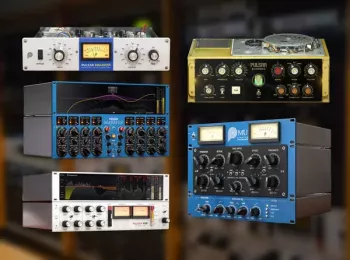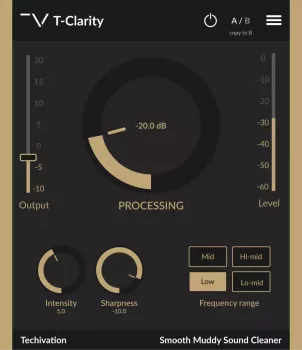 HiDERA | 4 November 2022 | 965 MB
HiDERA | 4 November 2022 | 965 MB
Pulsar plug-ins are highly regarded in the audio world for their emulations (often enhanced) of some of the most famous hardware processors of all time. In this Pulsar plugin video course, Groove3 instructor Eli Krantzberg takes you on an in-depth tour of the Pulsar plug-in collection, demonstrating how to achieve stellar results on various source tracks, as well as entire mixes. You also get the audio files Eli uses in the videos so you can follow along! These videos are for new Pulsar plug-in users.
The collection consists of Massive (modeled after the Manely Massive Passive EQ), Mu (modeled after the Manley Stereo Variable MU® Limiter Compressor), 1178 (modeled after the Universal Audio 1176), Smasher (a variation of the 1176-style compressor in “all buttons mode”), and Echorec (modeled after the Binson Echorec). Eli puts each one through its paces, explains how they work, and demonstrates how to tweak the parameters for a variety of musical results.
Eli begins with Massive, providing a background on its functionality and outlining exactly what makes this EQ plug-in unique, before giving you a tour of the interface and feature-set. Then you’ll hear it put to work on various instruments, including kick, snare, overheads, synth bass, and synth lead. Eli continues to demonstrate some more tone-shaping with Massive, this time in a broader nature, on keys, vocals, and electric guitars. Mu is next, and Eli begins by familiarizing you with the interface and controls before letting you hear it in action. As with the hardware version, this compressor excels at gluing many elements together, and Eli shows evidence of this with a drum bus, guitar bus, and a full mix.
Next, check out the 1178, based on the incredibly popular 1176 FET compressor. This notoriously fast compressor sounds great on many sources, as is made clear with examples on kick, snare, overheads, guitars, bass, and female vocals. Eli covers Smasher next, logically, as it’s simply a variation of an 1176 in the “all buttons in” or “British Mode” configuration, resulting in an unmistakable, aggressive character that’s famously applied to drums. Eli also shows how this plug-in can also enhance the percussive attack of guitars and bring to the forefront the ambience on a synth solo track.
Finally, you’ll learn all about Echorec, which faithfully recreates the legendary Binson Echorec – the machine responsible for so many memorable sounds on the earlier Pink Floyd albums, among many others. Eli explains how the four read heads interact, along with the other variables and parameters that contribute to this plug-in’s expansive sonic possibilities. Hear it used on a guitar solo, synth solo, and a vocal send. Finally, follow along with a final playtrhough of the two songs used throughout the series and compare the sound of the collective Pulsar plug-ins with the fully-bypassed versions.
For more information on each Pulsar Plug-Ins video, and to get a better idea of how each one can be put to use in your own productions, check out the individual Pulsar plugin video tutorial descriptions. Pulsar has made it easy to achieve world-class results with this collection, and with this course, you’ll see how it’s done. Don’t delay (pun intended)… watch “Pulsar Plug-Ins Explained®” now!





